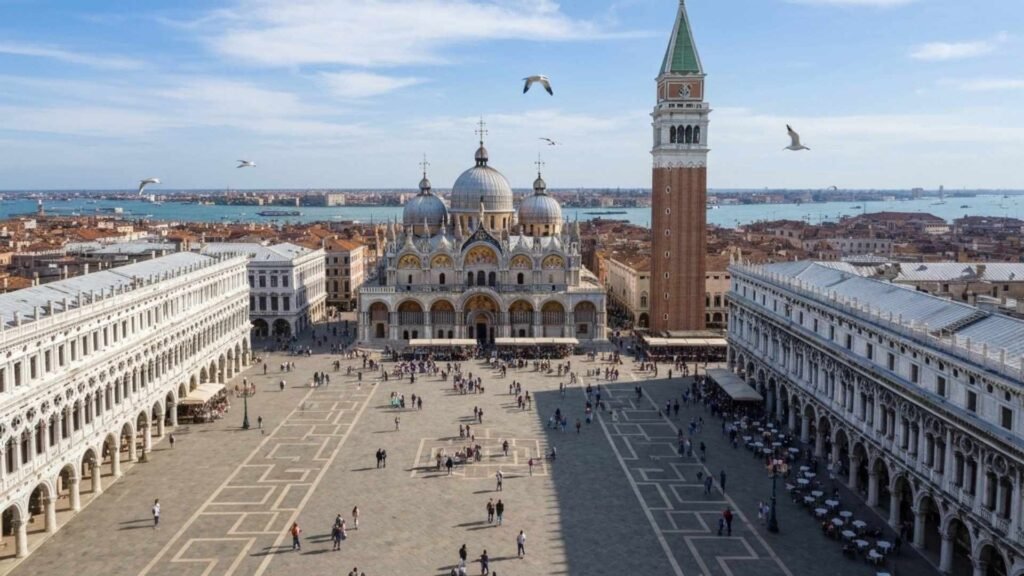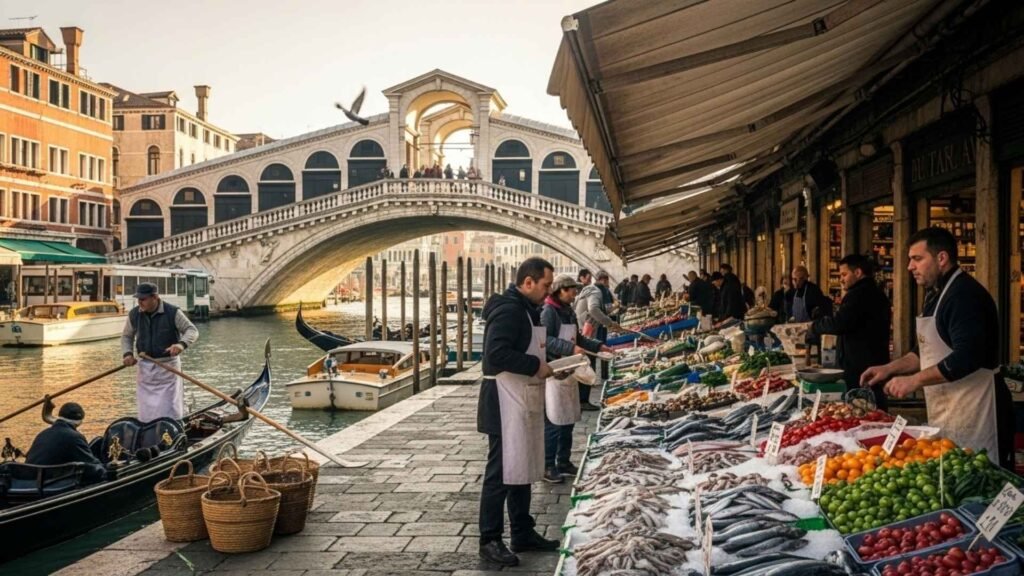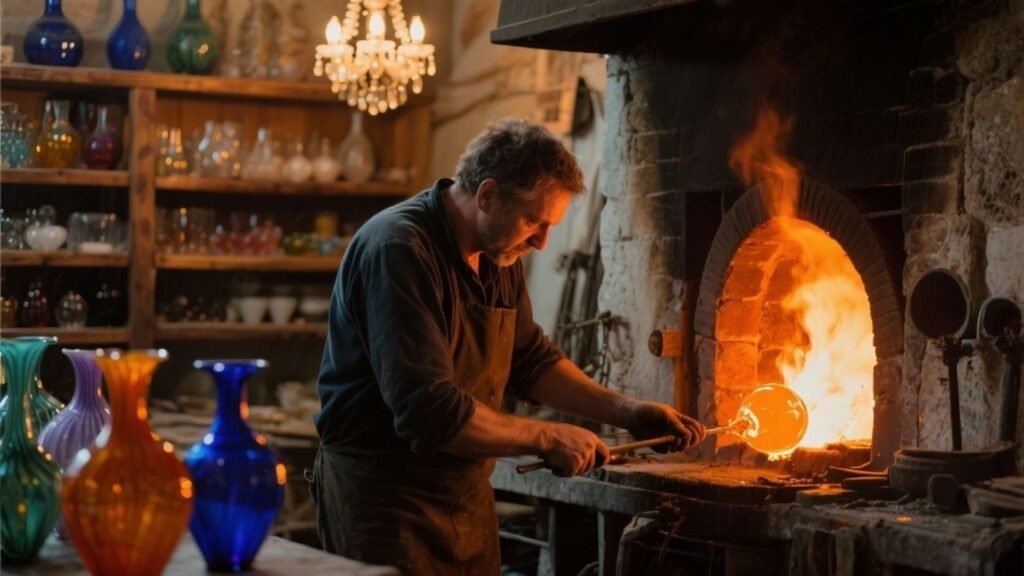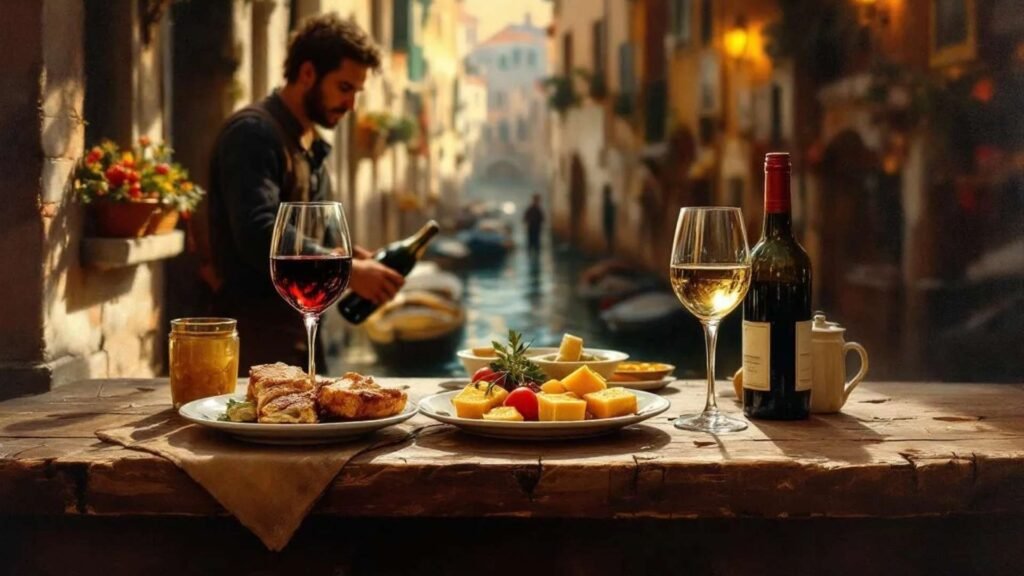Venice, or Venezia in Italian, is a city that defies logic and captures the heart. Built on a lagoon, supported by ancient wooden piles, and crisscrossed by over 150 canals and 400 bridges, it is one of the most unique urban landscapes in the world. Once a maritime superpower, now a living museum, Venice welcomes millions of visitors each year who come to experience its haunting beauty, rich heritage, and artistic legacy.
But Venice is not just gondolas and romance—it’s a city of complexity, resilience, and charm, where every church, alley, and island tells a different story.
1. Historical Background: From Maritime Empire to Cultural Jewel

Venice was founded in the 5th century by refugees fleeing invasions on the mainland. By the 10th century, it had grown into the Most Serene Republic of Venice, controlling trade routes across the Mediterranean and the East. The city’s naval and commercial strength made it immensely wealthy.
For over 1,000 years, Venice was independent, ruled by the Doge and governed through an elaborate republican system. It was a city of diplomats, traders, inventors, and artists—and home to innovations in banking, navigation, and publishing.
Venice lost its independence in 1797 to Napoleon and later became part of Italy in the 19th century. However, its legacy as a beacon of commerce, culture, and beauty remains unmatched.
2. Key Neighborhoods and What to See

Venice is divided into six districts (sestieri), each offering a distinct experience:
- San Marco: The historical and tourist center, home to St. Mark’s Basilica, Doge’s Palace, and luxury boutiques. Expect crowds but essential sights.
- Dorsoduro: Known for art and academia. Visit the Accademia Gallery, Peggy Guggenheim Collection, and enjoy quiet canal walks.
- Cannaregio: A residential area with fewer tourists and authentic Venetian life. Also home to the historic Jewish Ghetto, established in 1516.
- Castello: The largest sestiere, home to the Arsenale (historic naval dockyard) and Biennale Art Exhibitions.
- San Polo & Santa Croce: Great for local markets (Rialto), artisan workshops, and affordable dining.
Top Attractions:
- St. Mark’s Basilica: A masterpiece of Byzantine architecture with golden mosaics and relics of St. Mark.
- Doge’s Palace: Gothic elegance meets political history. Don’t miss the prisons and Bridge of Sighs.
- Rialto Bridge & Market: The commercial soul of old Venice. Visit in the morning to catch the fresh fish market.
- Grand Canal: Take a vaporetto (water bus) for a scenic ride through the city’s architectural wonders.
- Santa Maria della Salute: A stunning baroque church built as a votive offering during the 1630 plague.
3. Venice Beyond the Main Island

- Murano: Famous for glassmaking since the 13th century. Visit glass factories for live demonstrations and unique souvenirs.
- Burano: A colorful fishing village known for lacework and bright homes. Great for photography and local seafood.
- Torcello: One of the oldest Venetian settlements, offering tranquility and the impressive Santa Maria Assunta Cathedral (7th century).
- Lido di Venezia: A barrier island with beaches and 20th-century villas, home to the annual Venice Film Festival.
4. The Art of Living: Festivals, Food, and Local Culture

Festivals:
- Carnevale di Venezia: Held 40 days before Easter. It features masked balls, parades, music, and theatrical performances. Book early!
- La Biennale di Venezia: One of the world’s most important art exhibitions (held every odd year), alongside architecture, film, and dance festivals.
- Festa del Redentore (July): Commemorates the end of the 1576 plague with fireworks and a temporary bridge to the Redentore Church.
Cuisine:
Venetian food is influenced by both its lagoon and global trade history.
Popular Dishes:
- Cicchetti: Small plates like cod mousse, anchovies, or polenta served in wine bars (bacari).
- Risotto al nero di seppia: Squid ink risotto with a distinct briny flavor.
- Fegato alla Veneziana: Calf liver with onions—simple but traditional.
- Sarde in saor: Sweet-and-sour sardines with onions and raisins.
- Tiramisu: Although originating from nearby Treviso, it’s a must-try in any Venetian trattoria.
Drinks:
- Spritz Veneziano: Aperitif made with prosecco, bitter liqueur (like Aperol), and soda.
- Bellini: A cocktail of prosecco and white peach purée invented at Harry’s Bar in Venice.
5. Responsible Tourism & Sustainability
Venice struggles with overtourism, rising sea levels (acqua alta), and population decline. As a visitor, you can:
- Visit in shoulder seasons (April-May, September-October)
- Stay overnight instead of day-tripping
- Avoid cruise ships
- Eat in local-run establishments
- Support traditional crafts like Murano glass or Burano lace
- Be respectful: don’t picnic on church steps or swim in canals
Since 2024, Venice has been testing visitor access fees during peak seasons to limit congestion.
6. Essential Travel Tips
- Language: Italian is official, but English is widely spoken in tourist areas.
- Currency: Euro (€)
Transportation:
- Vaporetto: Public water buses; ACTV passes are economical for multi-day stays.
- Traghetto: A cheap gondola ferry to cross the Grand Canal.
- Gondola Rides: Fixed price, around €80 for 30 mins. Romantic, but not a practical commute.
Getting There:
- Marco Polo Airport (VCE): Connected to Venice by boat (Alilaguna), taxi, or bus to Piazzale Roma.
- Santa Lucia Train Station: Main rail hub on the Grand Canal.
Safety: Very safe, but beware of pickpockets around crowded areas.
7. Suggested 3-Day Itinerary
Day 1: Classic Venice
- Morning: St. Mark’s Basilica, Doge’s Palace
- Afternoon: Gondola ride + Rialto Market
- Evening: Aperitivo and cicchetti in Cannaregio
Day 2: Art & Islands
- Morning: Accademia or Peggy Guggenheim
- Afternoon: Murano + Burano (half-day trip)
- Evening: Dinner at a canal-side osteria
Day 3: Hidden Corners
- Morning: Explore Dorsoduro or Jewish Ghetto
- Afternoon: Sunset at Zattere promenade
- Evening: Classical concert or opera at La Fenice
Conclusion: Venice Is More Than a Destination—It’s a Masterpiece
Venice is one of the few cities in the world that feels almost mythical. Its canals are not just for show—they are its streets. Its past is not forgotten—it’s woven into every stone. Despite its challenges, Venice endures as a symbol of art, resilience, and human achievement.
Whether you’re a first-time visitor or a returning admirer, Venice will leave a mark on your heart—forever suspended in time, just like the city itself.

